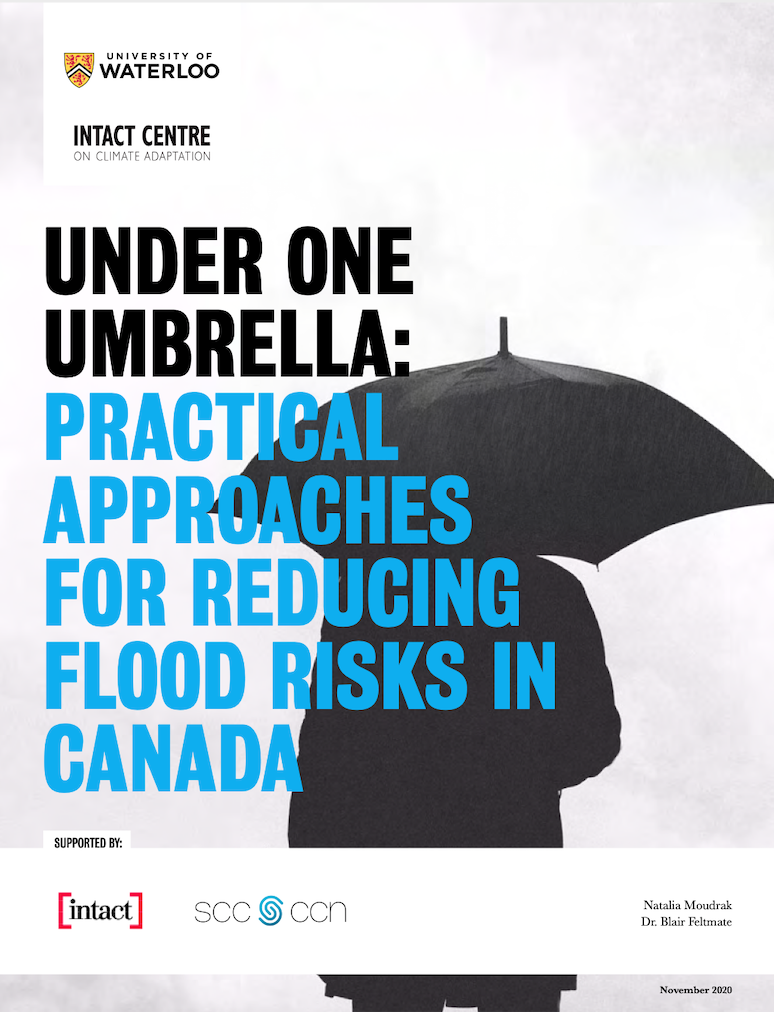New reporthighlights a range of standards and guidance on flood risk reduction

The University of Waterloo's applied research centre and IC3's sub-centre, the Intact Centre on Climate Adaptation (Intact Centre), released a new report ": Practical Approaches for Reducing Flood Risks in Canada".
The Intact Centre and the Standards Council of Canada (SCC) have joined forces to develop a new compilation of national standards and guidelines for increasing Canada’s resilience to flooding.
Presented as “one-stop-shopping” for practical and cost-effective ways to alleviate the risk of future floods, the report highlights that Canadians have the tools they need to protect lives and property from flooding. What has been lacking – until now – is a user-friendly summary of cost-effective and practical actions that Canadians can take to improve flood resilience in their homes, businesses and communities.
Extreme weather caused by climate change is on the rise, and Canada "is not moving fast enough" to limit the risks to people, property and the economy, say Natalia Moudrak and Dr. Blair Feltmate, co- authors of Under One Umbrella: Practical Approaches for Reducing Flood Risks in Canada.
Key findings from the report:
-
Flooding is the costliest extreme-weather disaster in Canada, causing insurance payouts to exceed $1-billion in the last 11 of the 12 years leading up to 2020, and $900-million in federal disaster-relief annually.
-
Businesses and homeowners endure additional uninsurable losses, to the tune of three to four times the insurable losses.
-
Canadians afflicted by floods often suffer physical and mental health problems, sometimes for years afterward.
Recommended actions from the report:
-
Homeowners and tenants can clean out eavestroughs and catch basins; install plastic covers over basement window wells; test sump pumps to ensure they are working; and make emergency plans and kits.
-
Governments at all levels can provide up-to-date flood-risk maps and property-level flood risk information; ensure that flood-forecasting and warning systems are in place; include flood- resilience expenditures in long-term financial plans; and update building codes to reflect flood- resilience measures.
-
Owners and managers of commercial buildings can create flood response plans and procedures for each building; equip buildings with portable barriers, sandbags, backup generators, emergency lighting and other supplies; protect critical equipment; and incorporate the cost of such actions into asset-management and long-term financial planning.
-
Professionals involved in buying, selling or insuring property -- including insurance brokers, mortgage brokers, real estate agents and home inspectors -- can boost their skills with professional training about household flood protection through their professional associations. Mortgage lenders can offer incentives for retrofits that make homes more resilient to flooding.
-
Regional conservation agencies and ENGOS (Environmental Non-Government Organizations) can publicize existing data about flood risks, and assess and communicate the economic benefits provided by specific natural infrastructure (such as ponds, wetlands and areas with trees and vegetation) for flood protection to local communities.
-
Institutional investors, such as pension funds, can identify the physical risks that climate change poses for companies in different industry sectors; if they find that flooding is a risk, they should find out whether those companies have taken steps to reduce that risk.
Learn more in Under One Umbrella: Practical Approaches for Reducing Flood Risks in Canada